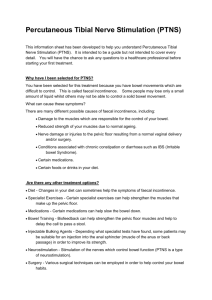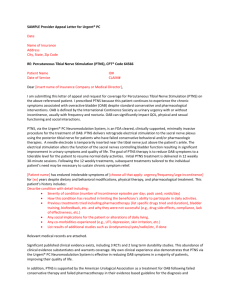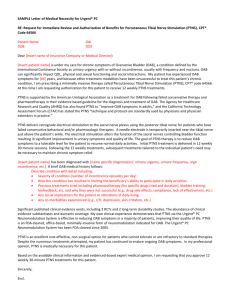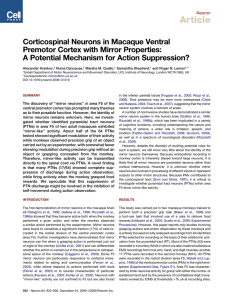Program#/Poster#: 860
advertisement
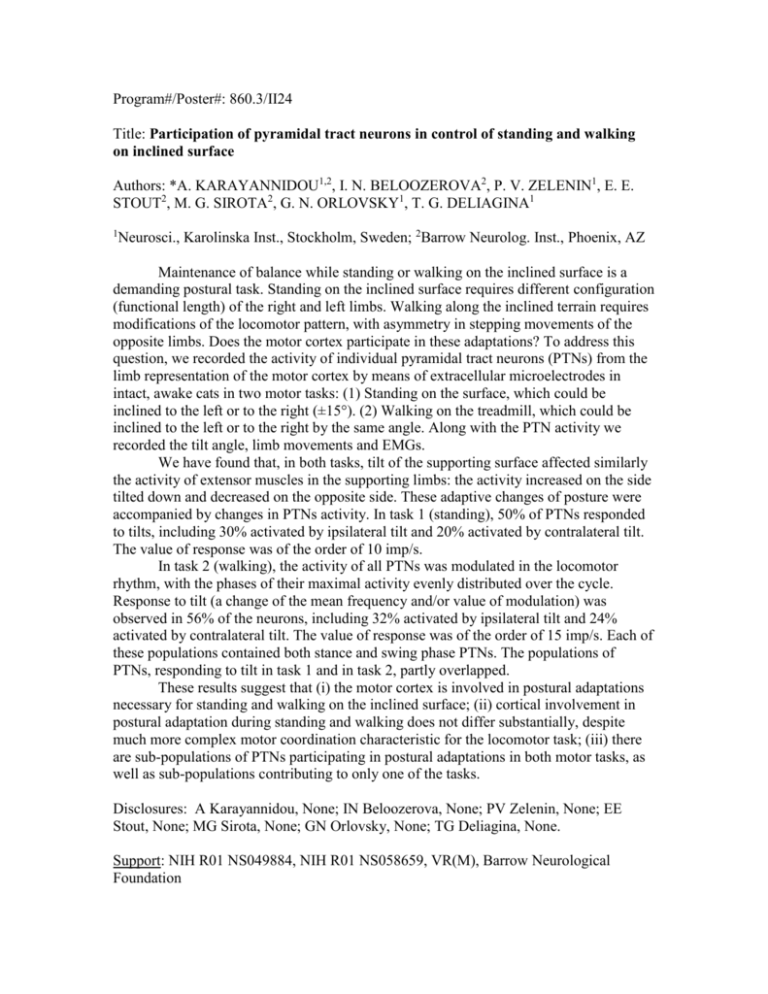
Program#/Poster#: 860.3/II24 Title: Participation of pyramidal tract neurons in control of standing and walking on inclined surface Authors: *A. KARAYANNIDOU1,2, I. N. BELOOZEROVA2, P. V. ZELENIN1, E. E. STOUT2, M. G. SIROTA2, G. N. ORLOVSKY1, T. G. DELIAGINA1 1 Neurosci., Karolinska Inst., Stockholm, Sweden; 2Barrow Neurolog. Inst., Phoenix, AZ Maintenance of balance while standing or walking on the inclined surface is a demanding postural task. Standing on the inclined surface requires different configuration (functional length) of the right and left limbs. Walking along the inclined terrain requires modifications of the locomotor pattern, with asymmetry in stepping movements of the opposite limbs. Does the motor cortex participate in these adaptations? To address this question, we recorded the activity of individual pyramidal tract neurons (PTNs) from the limb representation of the motor cortex by means of extracellular microelectrodes in intact, awake cats in two motor tasks: (1) Standing on the surface, which could be inclined to the left or to the right (±15°). (2) Walking on the treadmill, which could be inclined to the left or to the right by the same angle. Along with the PTN activity we recorded the tilt angle, limb movements and EMGs. We have found that, in both tasks, tilt of the supporting surface affected similarly the activity of extensor muscles in the supporting limbs: the activity increased on the side tilted down and decreased on the opposite side. These adaptive changes of posture were accompanied by changes in PTNs activity. In task 1 (standing), 50% of PTNs responded to tilts, including 30% activated by ipsilateral tilt and 20% activated by contralateral tilt. The value of response was of the order of 10 imp/s. In task 2 (walking), the activity of all PTNs was modulated in the locomotor rhythm, with the phases of their maximal activity evenly distributed over the cycle. Response to tilt (a change of the mean frequency and/or value of modulation) was observed in 56% of the neurons, including 32% activated by ipsilateral tilt and 24% activated by contralateral tilt. The value of response was of the order of 15 imp/s. Each of these populations contained both stance and swing phase PTNs. The populations of PTNs, responding to tilt in task 1 and in task 2, partly overlapped. These results suggest that (i) the motor cortex is involved in postural adaptations necessary for standing and walking on the inclined surface; (ii) cortical involvement in postural adaptation during standing and walking does not differ substantially, despite much more complex motor coordination characteristic for the locomotor task; (iii) there are sub-populations of PTNs participating in postural adaptations in both motor tasks, as well as sub-populations contributing to only one of the tasks. Disclosures: A Karayannidou, None; IN Beloozerova, None; PV Zelenin, None; EE Stout, None; MG Sirota, None; GN Orlovsky, None; TG Deliagina, None. Support: NIH R01 NS049884, NIH R01 NS058659, VR(M), Barrow Neurological Foundation


